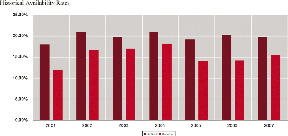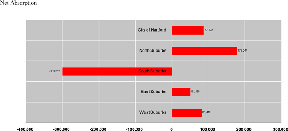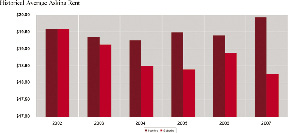CB Richard Ellis held its annual Hartford Market Presentation on January 17th at the Connecticut Convention Center. Moderated by Jeffrey Livingston, managing director/partner and John McCormick, executive vice president/partner at CB Richard Ellis, the presentation also featured guest speakers Edward Guay of Wintonbury Risk Management and Craig Thomas of Citi Property Investors.
"The presentation was both informative and entertaining with CB Richard Ellis' version of the game show Jeopardy used to present the market overview," said Lorraine Rayberg, publisher of the Connecticut Real Estate Journal, who attended the presentation with Janet Donovan, news editor of the Connecticut Real Estate Journal. The Jeopardy contestants included: Bill Bronson, Industrial Market; Pat Mulready, Investment Sales; Mike Puzzo, Office Leasing; Mike Stone, Multi-Housing; and Mike Riccio, Capital Markets.
The following is a summary of the company's market outlook for 2008.
Hartford commercial real estate is, in a nutshell, faring rather well in comparison to similar markets. The Greater Hartford office market ended the year with positive absorption. Rental rates are expected to increase slightly due to heightened landlord expenses, but national and regional economies continue to slow resulting in static leasing momentum throughout 2008 in Greater Hartford.
On a positive note, one of Hartford's main employer's, St. Paul Travelers, continued to increase its commitment to Hartford, as three other key employers, United Technologies Corporation, Prudential Retirement Services, and Lincoln Financial also renewed their commitments totaling approximately 580,000 s/f. On the other hand, Metlife chose to relocate its downtown operations outside the city. Overall, the past year was one of relative stability in the downtown office market as we witnessed slightly increasing rents, positive absorption, and relatively little sublease space brought to market. Currently, six of the eleven Class A towers are at least 90% occupied, which, coupled with the continued growth by some of Hartford's key employers, creates an optimistic outlook for 2008.
Renewal and expansion deals comprised most of the leasing activity that occurred in the fourth quarter. Some notable transactions include: Cantor Colburn's 48,000 s/f relocation from Bloomfield to 20 Church St.; Edward's Angell Palmer & Dodge's 28,000 s/f relocation from State House Square to 20 Church St. and Webster Bank's 49,000 s/f renewal and expansion at CityPlace II. Confidence in downtown Hartford continues to increase as the Class A market remains tight.
While MetLife's exodus from the city will negatively affect the downtown market's vacancy index, modest growth is expected in 2008. Large blocks of Class A space will remain relatively scarce as the city's financial, insurance, and other service based businesses continue to expand.
Gaining much attention this year is the dynamic currently in play in West Hartford Center. There is simply more demand for office space in West Hartford Center than anywhere else in the Greater Hartford market. Driven by unmatched pedestrian retail component, associated amenities and good highway access, West Hartford currently enjoys minimal vacancy and the highest Class A rental rates in the market at north of $30 per s/f.
Hartford's residential and hospitality renaissance continued to progress rapidly through 2007. Its largest residential development project, Hartford 21, a 262 unit, 38-story apartment tower, is now approximately half occupied and, according to ownership, lease-up is ahead of schedule. The former Sage Allen site on Main St. is now complete and occupied with residential and retail tenants, joining Trumbull Centre as an alternative for prospective downtown residents.
At the close of 2007, the Greater Hartford industrial market remained stable with increasing demand, mostly for newer high bay distribution buildings. Connecticut continues to shift from a manufacturing-based to a service-based economy. This change mirrors a national trend, but is more pronounced in New England than other areas. A new trend that has directly impacted the industrial market in Greater Hartford is the increased cost of land. Today, developable land with utilities is becoming scarce, forcing investors to pay double what comparable land sold for five years ago.
User demands still remains limited for the large inventory of older, low bay manufacturing buildings in the Greater Hartford region. As a result these buildings account for the majority of vacant space. Corporations are heavily discounting these properties, mostly to developers who are trying to reposition the assets.
Overall, the Greater Hartford industrial market should experience growth in 2008. Build-to-suit activity should continue, and land prices will rise at a similar pace to recent years.
Investment sales volume in 2008 will be determined by seller expectations and the availability of attractive financing. Currenty, there is more than 2.3 million s/f of office space available for sale valued at approximately $240 million.













